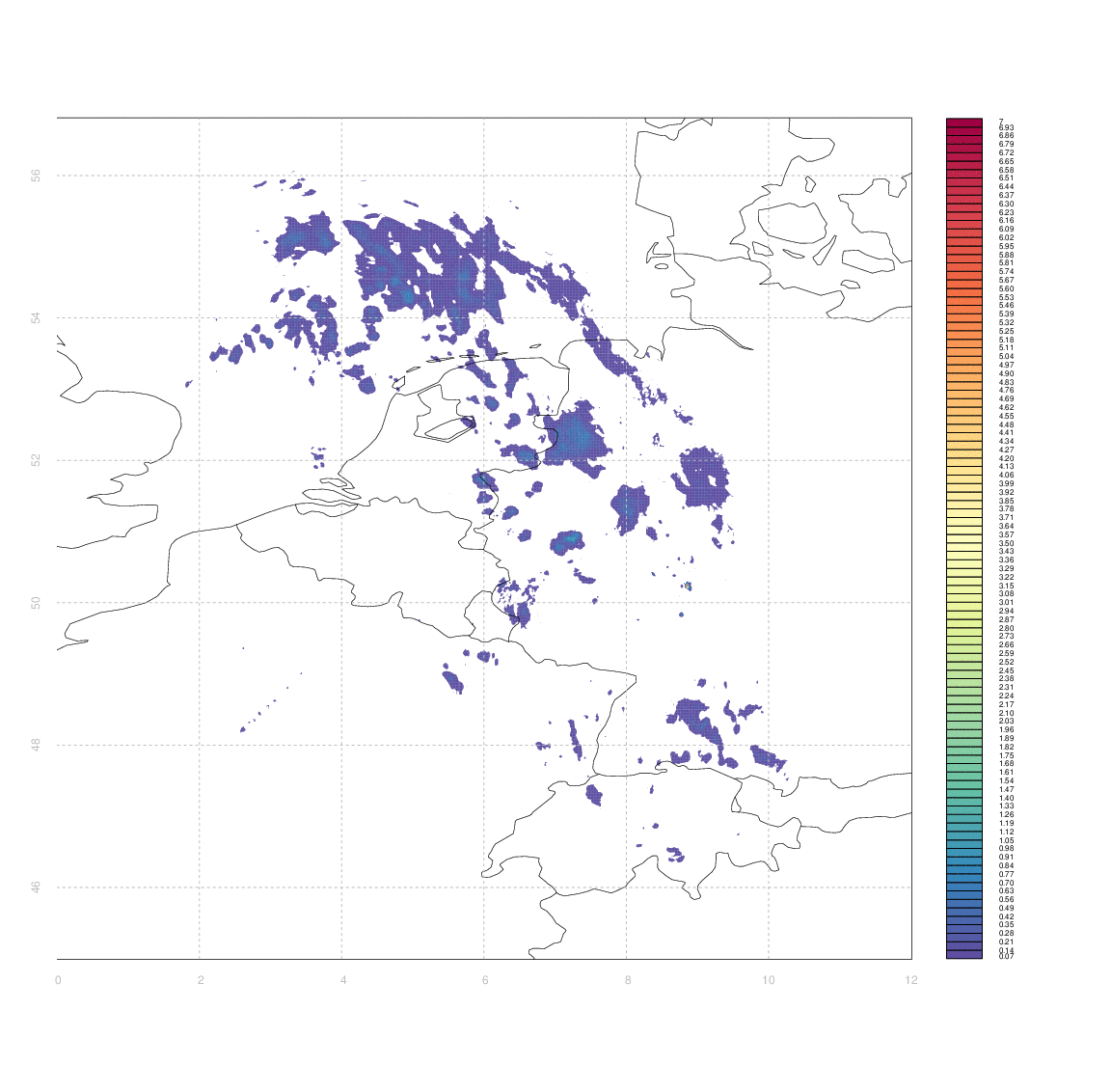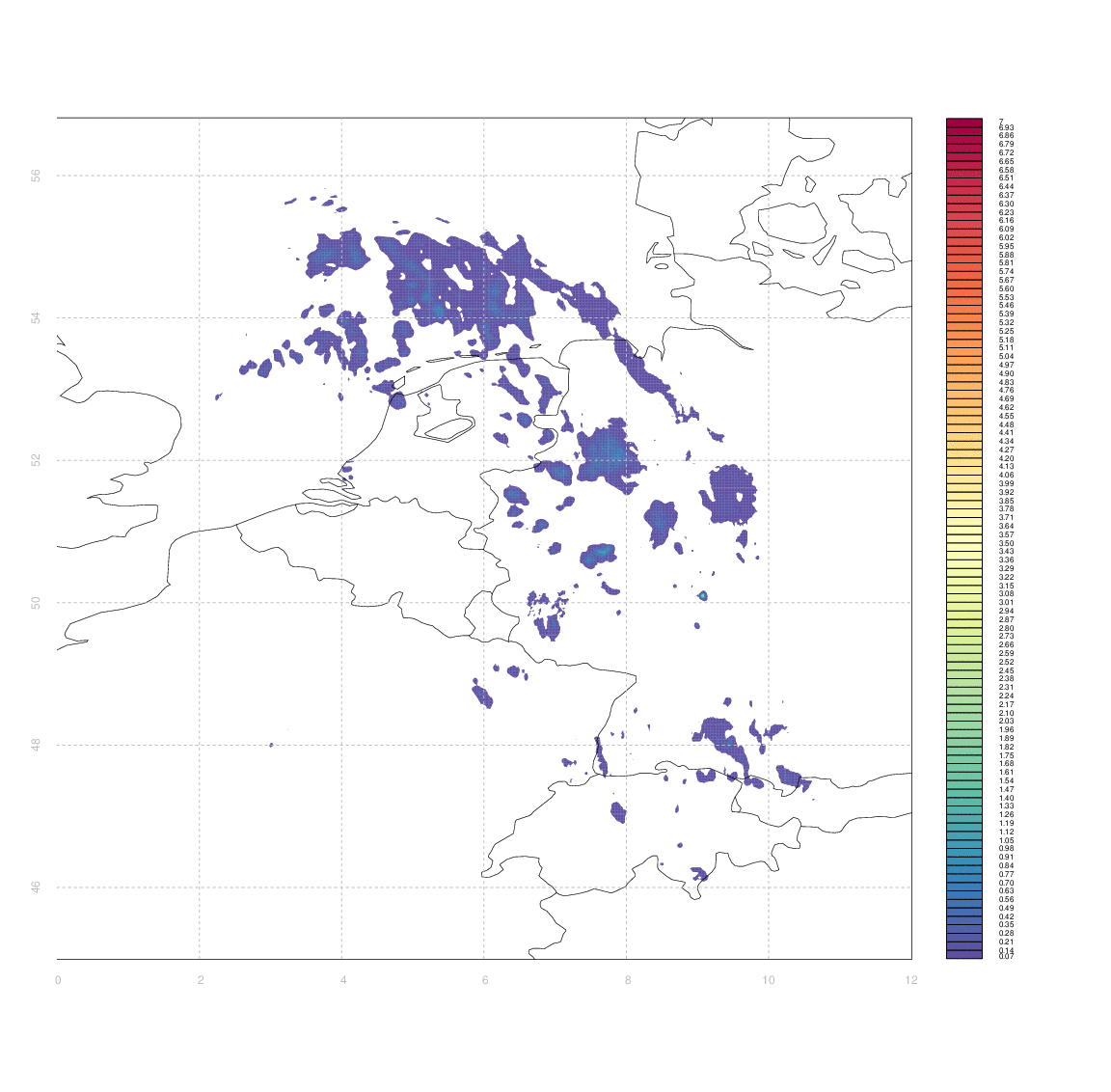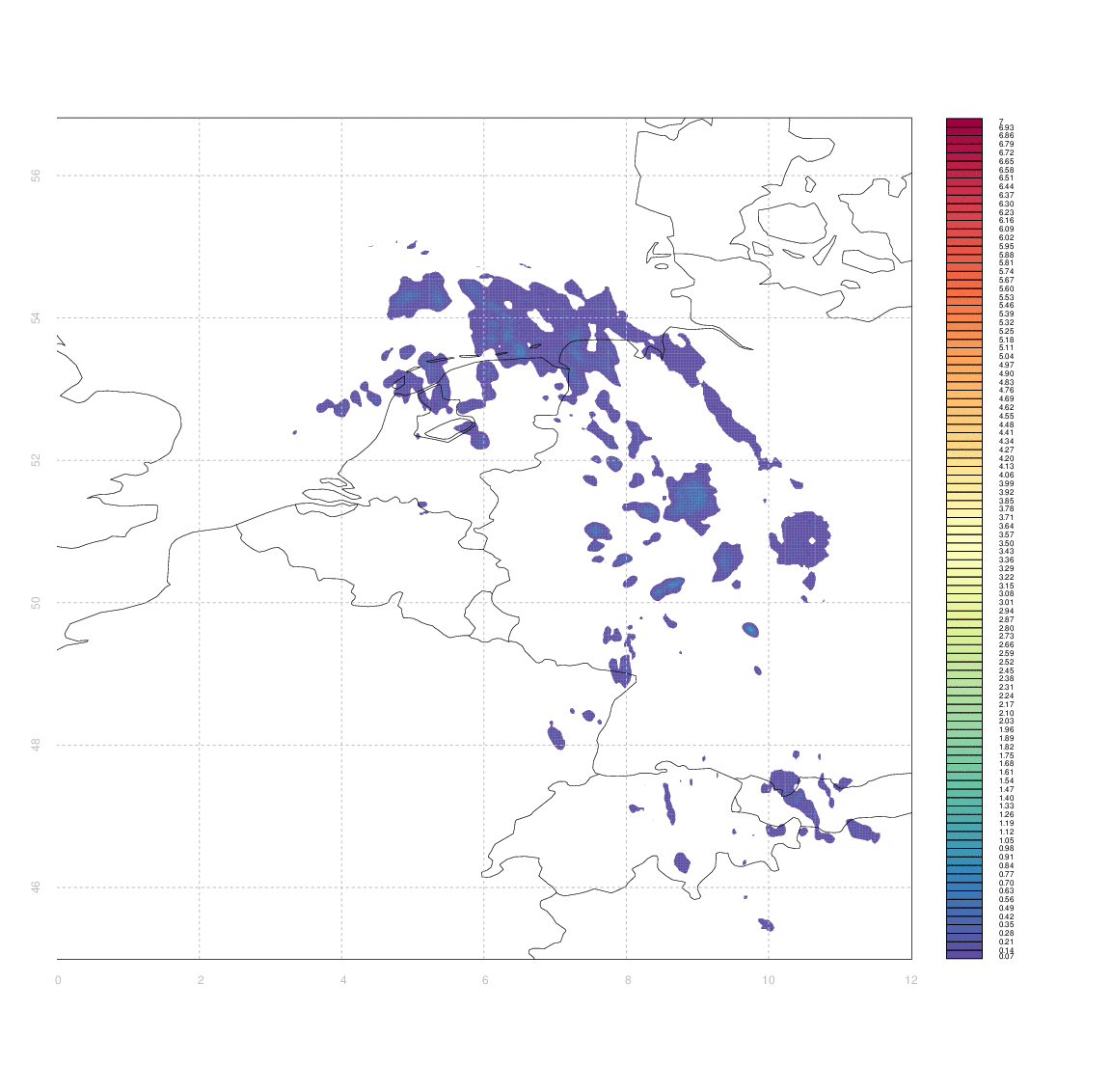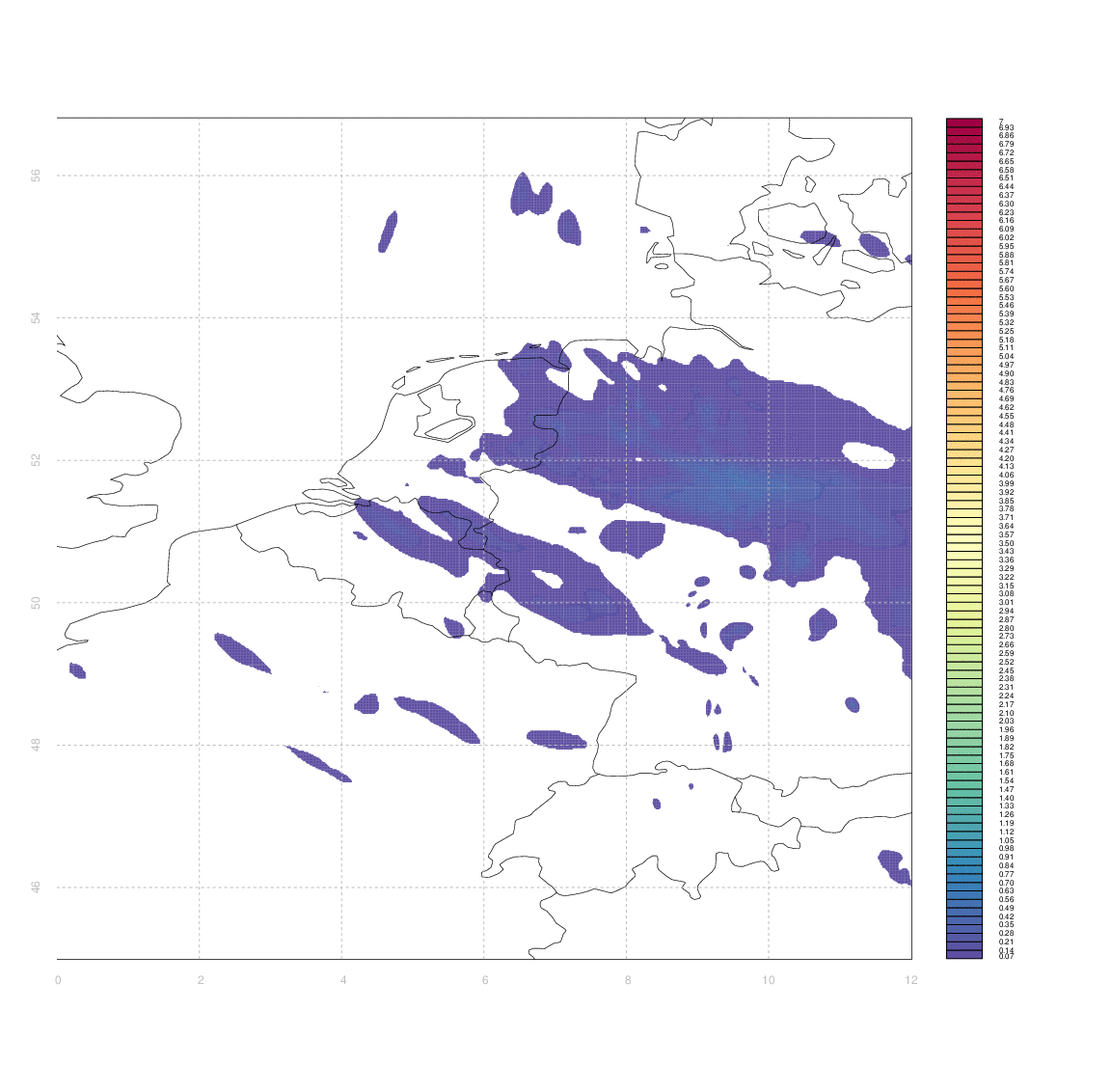I have a number of arrays describing both forecasts and observations of geospatial data (e.g. precipitation intensity, cloud fields...). Included are four animated gifs, each looping back and forth between an observation (of precipitation) & a forecast covering the period of the observation. The four forecasts vary markedly in quality (from extremely good in the first case to terrible in the fourth).
I would like to have some way of systematically quantifying the similarity between two such arrays (e.g. between an observation and its associated forecast). I don't really know any more sophisticated way than to simply take the difference between two arrays (normalized somehow, e.g. by dividing by the mean of one of the first).
The problem is that 'scoring' the forecasts in this way gives case #3 & #4 equally bad marks - even though from visual inspection case #3 appears substantially better than #4. Clouds which are in slightly the wrong place (e.g. the ones in central Germany, or in Switzerland & Western Austria, in case #3) score equally poorly to those which are in entirely the wrong place, or simply absent.
Ideally, I'd like some measure of the minimum amount by which one image needs to be 'deformed' to yield another one, but I have no idea how to approach that in anything like a systematic manner.



